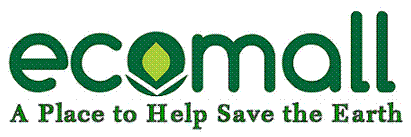

EARTH-FRIENDLY
HOUSEHOLD TIPS

Purchasing safer alternatives to hazardous products is the real answer to our hazardouswaste disposal problem. Each of us must take responsibility for the impacts caused by theproducts we buy. If one alternative doesn't do the job or seems like too much work, don'tgive up! Try another.
Many retailers now carry products advertised as "environmentally safe" or"green." You may find these to be effective alternatives and less time consumingthan mixing your own materials. However, careful examination of the label is necessary toinsure that these products are indeed what they claim to be. Currently, there are nostandards these products must meet to make environmentally friendly claims. Look forspecific statements such as non-toxic, non-petroleum based, free of ammonia, phosphates,dye or perfume, readily biodegradable, and recyclable container.
Use your consumer power, ask your grocer or hardware store to stock safer products andsuggest them to your friends.
A few simple ingredients can be used to replace most of your hazardous householdcleaning products. Baking soda, cornstarch, lemon juice, liquid soap, vinegar and boraxused individually or in combination will effectively clean, deodorize or polish throughoutyour home.
10 strategies for reducing toxics in your home:
1. Reduce or eliminate pesticide use
- Do not use preventative applications such as "weed n' feed or seasonal applications
- Reassess your tolerance for each type of pest
- Learn about pests and how to target them effectively
- Plant insect resistant plant species and maintain plant health
- Use non-chemical controls first, such as snail beer traps
2. Examine your painting needs
- Use latex or water based paints whenever possible
- Buy only what you need and use it all up or give it away
3. Use wood preservatives only when necessary
- Don't use a wood preservative if a water repellant will do
- Don't use wood treated with creosote or pentachlorophenol
4. Use cleaners wisely
- Use heavy duty cleaners only for heavy duty jobs
- Purchase and use non-toxic cleaning products
5. Avoid aerosol products
- Wipe-on applications are safest
- Pump sprays avoid the use of propellants
6. Avoid chemical air fresheners
7. Re-use solvents
8. Use water-based products instead of petroleum or chemical based products wheneverpossible
9. Buy or rent a hand snake for unclogging drains
10. Read product labels
- Look for CAUTION, WARNING and DANGER as signal words, and buy the least-toxic products you can find. Of the three, products labeled CAUTION contain the least toxic ingredients.
- Avoid chlorinated compounds, petroleum distillates, phenols, and formaldehyde
WaterSaving Tips
In the bathroom
- If you take a five-minute shower instead of a bath, you save about 15 gallons per shower.
- Install a low-flow showerhead to reduce water use by 50% or more. You'll save about 3 gallons per minute per shower.
- Install an ultra-low flush toilet which uses 1.6 gallons of water per flush rather than 6 gallons per flush. You'll save almost 4 gallons per flush.
- Install a low-flow aerator faucet to replace older models and save 2.5 gallons per minute per person.
In the Kitchen
- As in the bathroom, install a low-slow faucet aerator. You'll save 2.5 gallons per minute.
- If you use an automatic dishwasher, wait until you have a full load and only run once a day. Short cycle uses 7 gallons. You'll save 10-12 gallons per each cycle not run.
- Keep a pitcher of cold water in the refrigerator instead of running it at the tap until it cools. You'll save about 2 gallons per drink.
Lawn or Garden
- Water in the evening or morning to prevent rapid evaporation during the heat of day. You'll save 35 gallons per 1/2 acre per water.
- Use a nozzle which can be shut off or adjusted to a fine spray. You'll save 5 gallons per minute.
- Use a broom or rake rather than a hose to remove leaves and debris from driveway, walk, patio, and pool decks. You'll save 25 gallons per 5 minutes of work.
In the Garage
- Wash your car with a bucket, sponge, and a hose with a shut-off valve. You'll save 85 or more gallons per wash.
- Use a car wash which recycles water or wash your car at home. You'll save 500 gallons per wash.
Written by: City of Santa Monica
RELATED LINKS:

Updated Daily!
| * * * IN-HOUSE RESOURCES * * * |
|---|





